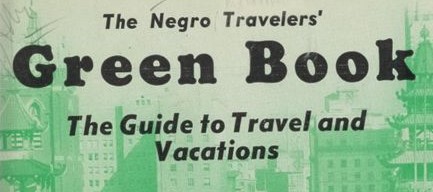Intended Users
The envisioned primary users of our Green Book archive are k-12 educators and students.
What would their purpose be for utilizing the online archive? There are many ways K-12 educators and students could utilize our Green Book online archive, as the use of primary sources in classrooms is underutilized. For example, as discussed by Patricia Garcia in her article titled Accessing Archives: Teaching with Primary Sources in K–12 Classrooms, in the case of California and Common Core, according to 11.10 of History–Social Science for California Public Schools¸ students are required to learn about the civil rights era under what they call “Students analyze the development of federal civil rights and voting rights.” (Garcia, 2017) This Common Core requirement works well for utilizing the Green Book because annual books were published throughout the civil rights era. Depending on the grade level, there are many ways the Green Books could be used such as the following examples that we hope educators will further develop into lesson plans for their students.
Lesson Plan Ideas
- 1) Break the class into groups 2) assign a different state in a specific year of the Green Book to each group 3) have each group present a summary of their findings to the class 4) have the class compare and contrast the differences in all their respective findings 5) critically think about everyone’s results and what that meant for the lived experiences of Black people living in or traveling through the state they were assigned. This assignment can be repeated with different variables and leading questions like: different regions, years, or did an increase in racial unrest in a certain state change how many listings were in the book around that time?
- 1) Use the Green Book to critically think about the informal (sundown towns) and legal (segregated facilities) racial and political challenges Black Americans faced during the Green Book’s Publication. 2) Pick a certain number of listings and seeing which ones are still operating today and/or if the original building still exists. Does the amount of listings in a state correlate or contrast with external facts like racial demographics, racial tension/discriminatory laws, median income of Black families at the time? Perhaps some states had laws that made it harder for Black people to buy or operate buildings and get loans from the bank. Perhaps some states didn’t have many discriminatory laws but other historical records can verify that not many Black people lived or traveled there during a specific time.
- 1) Find a Black elder in the community who used the Green Book and interview them on how it helped them travel throughout the U.S. Explore different ways to capture their story such as conducting an oral history or photojournalism interview. Perhaps there's an opportunity for the student and Black elder to conduct the interview in the area where the business(es) they visited used to be.
Create your own digital version of the Green Books
These sisters add to the legacy of the Green Book listings by creating a digital version that celebrates Black culture and the people who are disrupting, innovating, and building new businesses in the Motor City: Detroit. What places would you add?
Tastemade, Youtube, Published 16 December 2022.
Not a K-12 Educator? All are welcome to use this archive! Here are some other ideas for our various users
Filmmakers and story writers - to better accurately depict and select real places that Black people were welcomed when filming historical scene taking place during the Green Book's production period
Activists - to get a better understanding about the social and economic history of an area as it pertains to Black Americans
Artists - to help inform or be included in their artistic work
And anyone else who has an interest in engaging in this type of work!

